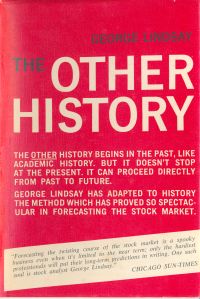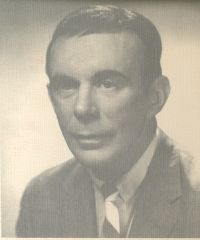 As a schoolboy I did not do well at History. Maybe things are different now, but in those far-off days to succeed in the subject one had to be able to memorise a large number of seemingly arbitrary, unrelated facts. I found the lack of pattern in the subject an obstacle to understanding, and turned for comfort to Maths, where all is clean and tidy.
As a schoolboy I did not do well at History. Maybe things are different now, but in those far-off days to succeed in the subject one had to be able to memorise a large number of seemingly arbitrary, unrelated facts. I found the lack of pattern in the subject an obstacle to understanding, and turned for comfort to Maths, where all is clean and tidy.
In this book, George Lindsay comes to the rescue of we lovers of numbers. Look, he says, history is just a series of cycles. Forget about all that messy human stuff about the causes of events and concentrate on the peaks and troughs. And, since these cycles continue into the future in the same way, history becomes a way to predict events as well as analyse them in retrospect. He begins by identifying one type of event as most important:
Our starting point is always an agitation. An agitation is a heightened consciousness and increased activity among a large number of people at a specific moment in time, It is normally directed toward a certain end. An agitation may be physical in nature, in which case it usually involves bloodshed, or it may be intellectual or emotional.
Note Lindsay's precise, scientific language. The next concept to grasp is the interval. Lindsay says that agitations occur about 40 years apart. So for example the French Revolution of 1789 is followed by the July Revolution of 1830. His next example is less clear: he says that the Russian Revolution of 1917 was somehow completed in 1957, though the only actual event of 1957 he gives is the launch of Sputnik. One might almost get the idea that Lindsay is trying to fit the facts of history to his theory, rather than the other way round. Fortunately it is comfortably elastic with plenty of room for adjustment:
The number of years we count forward from an agitation varies. It is often about 40 years, but can be as little as 39 or as much as 41. In many other cases, the median figure is 36 years, which can be as little as 35 or as much as 37 years.
 Where the agitation is an unsucessful revolt it must be treated differently, he says. These events supposedly occur about 55-57 years apart, but just in case the facts prove recalcitrant:
Where the agitation is an unsucessful revolt it must be treated differently, he says. These events supposedly occur about 55-57 years apart, but just in case the facts prove recalcitrant:
There's also a third interval, one with the rather wide latitude of 64 to 69 years.
Lindsay's approach to history, with its need to tie events together regardless of meaning or any common causation, leads him to make some bizarre connections when he attempts to bring artistic endeavours into the picture:
Tennyson's Poems of 1842 was a literary landmark. The British suffered a damaging defeat at Majuba in 1881.
Is there a military defeat 40 years after every "literary landmark"? I suppose there must be. There's certainly no end of connections once you start to look for them:
Henry James wrote of relays of "ambassadors" who crossed the ocean to save a young American from being corrupted by an alien culture. Count the 40-year interval and you come to 1941. Special Ambassador Kurusu joined the resident Ambassador Nomura in Washington, and they warned our heedless government that the United States would cross the ocean and intervene in Asia at its own peril. The Japanese bombed Pearl Harbor shortly afterward.
Lindsay arrived at his ideas about history from a background in stock price forecasting. He made his living as what is called a "technical analyst", one who tries to guess at future prices by looking at charts of past ones. As he puts it here:
Over a span of two decades, I have made perhaps 300 distinct predictions of stock prices which have come true with varying degrees of accuracy.
This implies, though it does not say so directly, that he did better than chance in his forecasting. If so, why he did not simply invest his own money and become vastly rich is a bit of a mystery. (He could have turned one dollar into millions if the profit on each of his 300 predictions was anything over a mere 5%, for example) .
Technical analysis, despite a lack of evidence in its favour, is still going strong. There's a lot of books and software on the market supposedly to aid the would-be investor, though again it is strange that those behind them don't keep their valuable "secrets" to themselves. Philanthropists all, I presume.
Technical history - which is what Lindsay also called his "other history" - has definitely not caught on in the same way. Too many conservative thinkers unwilling to give up the idea that events have causes, the fools. Since 2009 marks the book's 40th birthday, I boldly predict that in that year, or the next, or 2023, or thereabouts, something will happen that is vaguely related. Then you'll all believe!
I too have heard the
History cycles
Lindsay's Right -- proven!